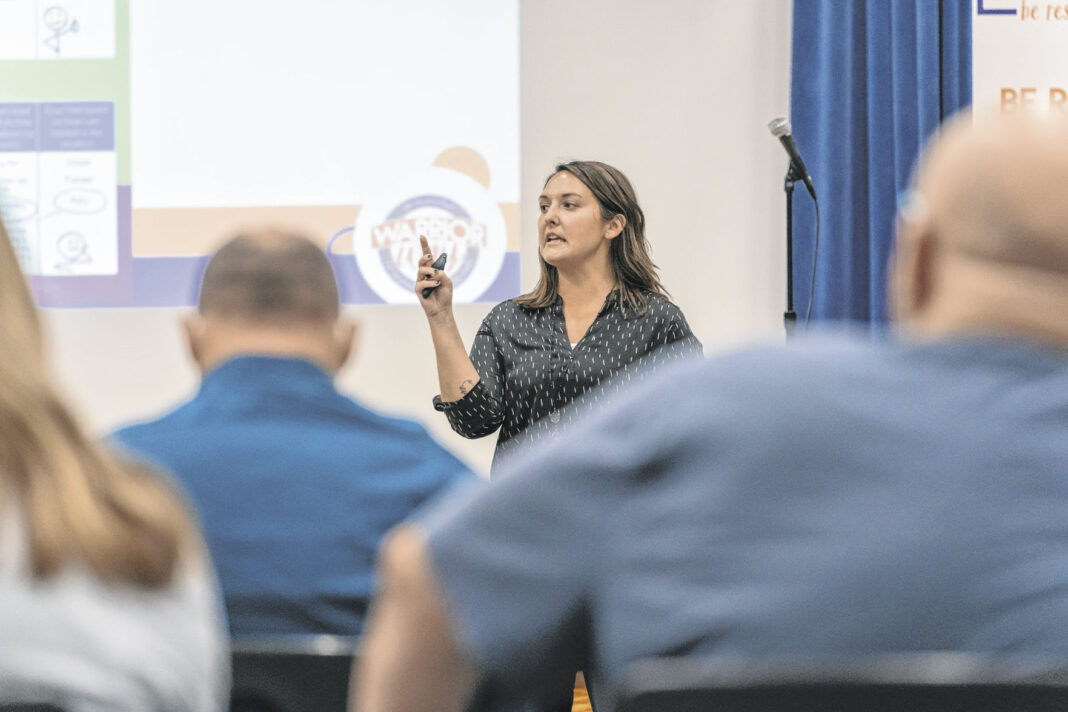In recent months, social emotional learning, and potential ties to Critical Race Theory, have been brought up several times during public comment at districts throughout the county and country.
Some parents who spoke at local school board meetings were concerned schools would teach Critical Race Theory, which originated in legal scholarship and spread to other fields of study. It assesses the role race and institutionalized racism play in putting minority group members at a disadvantage in society, according to the American Bar Association. It is often taught in law school, not in kindergarten through 12th grades.
Locally, parents of students at Center Grove, Clark-Pleasant and Franklin schools have spoken against it, though none of the districts’ curricula include the study of it.
Parents also expressed concerns about transformative social emotional learning, which includes components of equity and social justice, according to CASEL, the organization that promotes it. They say themes of social justice and equity are linked to Critical Race Theory and can make some students feel ashamed of their ethnicity.
Local schools, however, have been practicing standard, non-transformative social emotional learning for several years, school officials said. The strategy centers on emotional regulation to cope with anxiety, depression, ADHD and other conditions that often affect children and teenagers, and does not include racial themes.
At Clark-Pleasant schools, administrators responded to parents’ concerns by hosting a four-part community series centered on social emotional learning. The series started in August and will end in November.
During each meeting, diversity, equity and inclusion coordinator Ruby Butler, and behavioral health director Connie Poston present to parents. During the first community meeting in August, adults went through social emotional learning activities, including holding up colors that corresponded to how they would feel in certain situations, and standing up if certain statements applied to them, such as “rise if you like cats,” or “rise if you’re currently worried about something.”
“’Rise up’ is an example of being respectful to those around us and getting to know those in our class or in this room,” Poston said. “When we learn about other people, it’s an example of being respectful.”
When students understand themselves and each other, it makes for a better school environment, Butler said.
“At the end of the day, I want to reach every single child that comes into the classroom. It’s not just for the students, it’s for the whole environment,” she said.
Since social emotional learning has much to do with students learning to identify their emotions and react to them in constructive ways, schools have given students different outlets, such as objects they can fidget with, including play-doh or sand, said Christy Berger, director of school counseling and mental health at Center Grove schools.
“At Center Grove, our goals are that our students will be able to apply skills, understand and manage their emotions, feel and show empathy toward others, establish and maintain positive relationships, and make responsible decisions,” Berger said. “Those skills have been taught for years at Center Grove. Most recently, we have called those skills social emotional learning.”
For children to regulate their emotions, they can cool down in a corner of the classroom called a “calming corner,” or go to a counselor’s office. Students at Franklin schools can also use fidget objects throughout the day, said Angie Clendening, counselor at Webb Elementary School.
Social emotional learning is about making everyone feel included, Clendening said.
“I think social emotional learning would naturally discourage discrimination. It’s teaching children to recognize and respect children that are different,” she said. “It could encompass race, but it never includes shame.”





